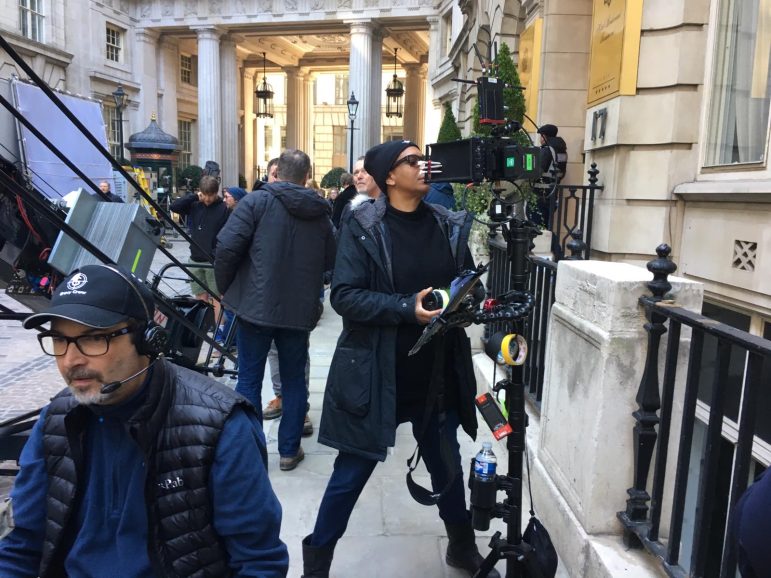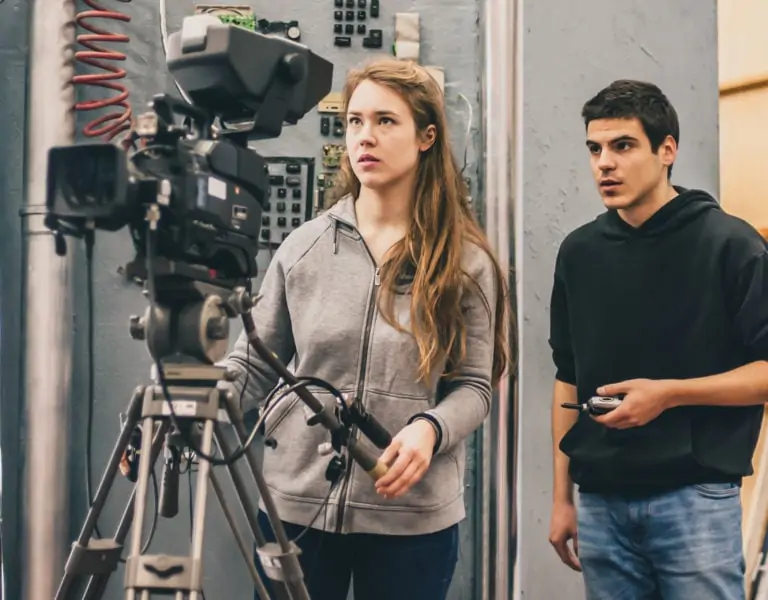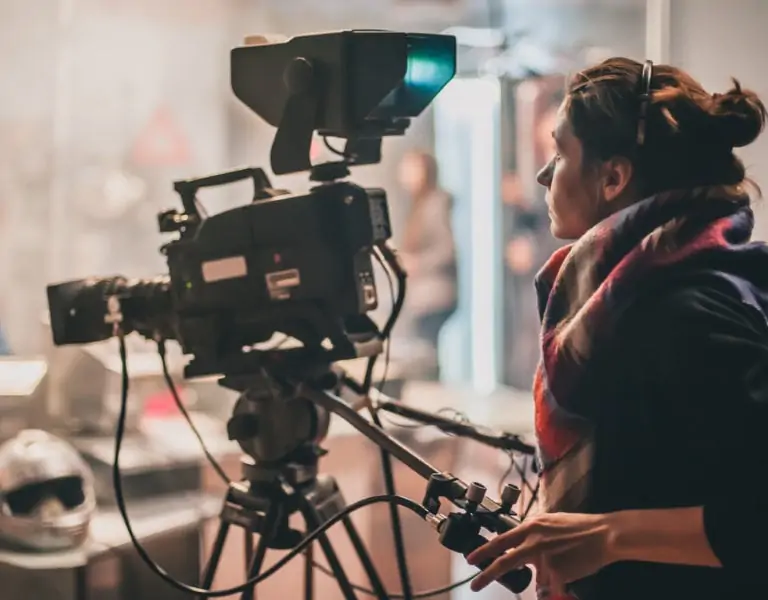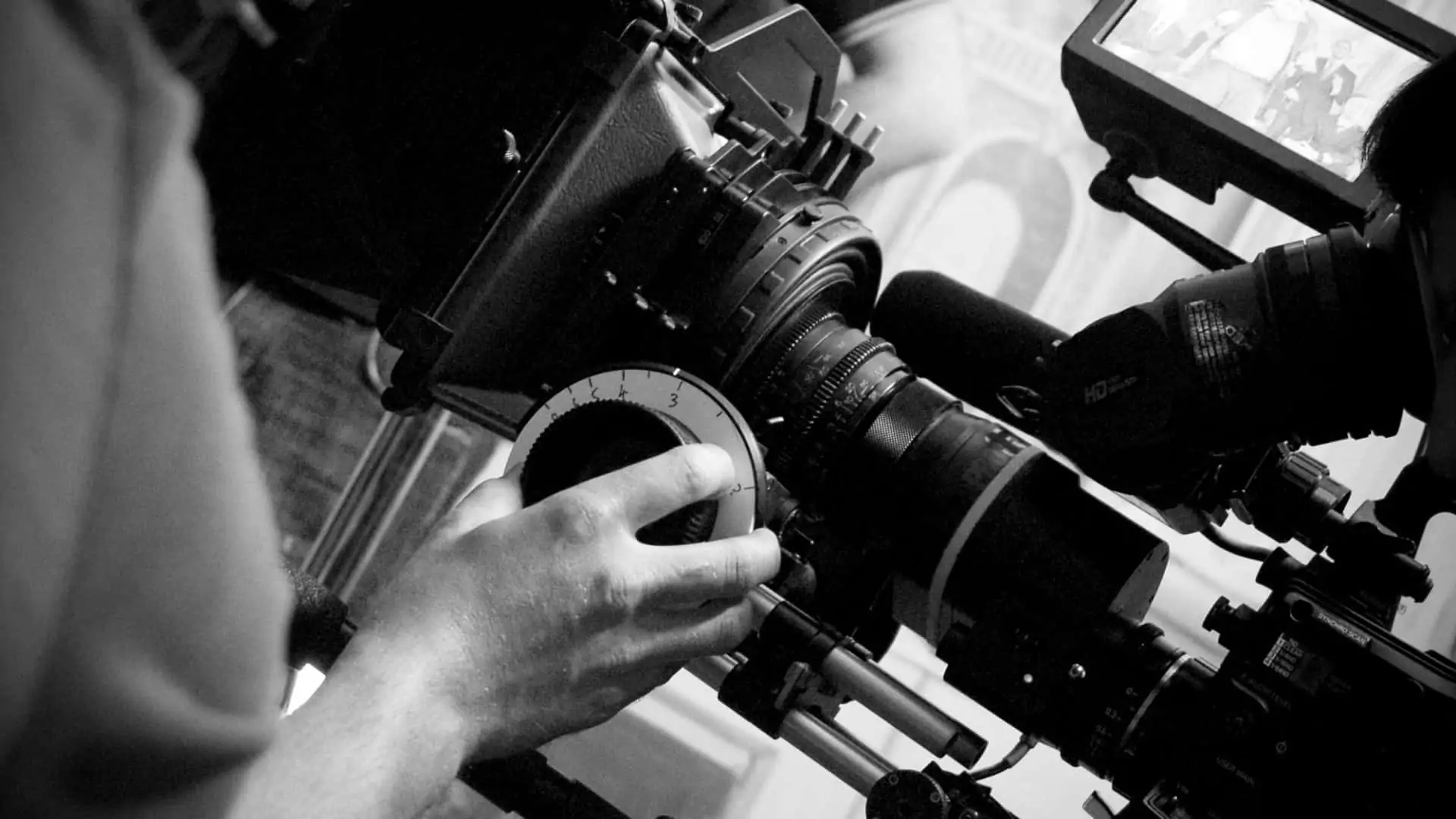FOCUSSING WITH FINESSE
Hilda Sealy GBCT tells us about her career in the camera department while Black, female and a mum.
Selected filmography (as focus puller unless otherwise specified):
Film and TV:
Call the Midwife S4-13 (2014-2023)
Liaison, B camera, (2023)
Intelligence, “A Special Agent Special” (2023)
Intelligence S1 (2020)
The Rook, 2nd unit and additional photography (2019) Death at a Funeral (2007)
Commercials:
Warburtons, ‘Mad About the Bread’ (2023)
Sofology, ‘Helena upside down’ (2023)
Weetabix (2022)
What inspired you to work in the camera department?
I was a tutor/mentor in a Saturday school for Black children and wanted to find a different way to teach using audiovisual resources. I took a year out doing various photography and basic media courses, and it was during that time that I met Black Audio Film Collective (BAFC) and began working in their offices in Hackney. I met some great technicians while working with John Akomfrah, Lina Gopaul, Reece Auguiste and Avril Johnson, including Seamus McGarvey ASC BSC ISC who was a focus puller at that time working on a documentary.

How/where did you learn the craft?
I was never a trainee, rather I learnt through links that I’d made whilst working at Black Audio. I became a documentary camera assistant on 16mm film cameras and worked on low-budget films and shorts where I met Julian Court BSC. I worked with Belinda Parsons on documentaries as well as Ian Watts, and it was on a documentary that I first met and worked with Oliver Curtis BSC.
I basically learnt by doing and going into rental houses to learn kit.
What was your career progression?
I was a documentary assistant and was also focussing on low/no-budget productions, particularly those produced by the BFI as that was basically the arena that most ‘minority’ (now known as ‘diverse’ crew) found work.
As time went on and the careers of DPs that I’d been working with progressed I quickly realised that if I wanted to continue working in the camera department that I would have to start again and so began my career as a clapper loader in TV drama. It did proffer to me the opportunity to work with and learn from many focus pullers who went on to have successful careers in feature films.
I really enjoyed my time as a clapper loader working on TV drama and commercials with 16mm and 35mm film. There were a few years of overlap as I built up my experience and knowledge as a focus puller doing B camera dailies on TV dramas that I was loading on and working with Oliver Curtis BSC as his focus puller on commercials.
I was lucky to work with a couple of focus pullers that encouraged me to step up and shared their knowledge with me.
What would you single out as your big break?
I’m not the product of a singular big break. Was the first time that I met Black Audio my big break as they gave me my first job and so many opportunities to learn as a young Black woman entering into the unknown? Was it progressing from low budget focussing with Julian Court to loading on TV drama and commercials thus working on mainstream productions? Was it being introduced to Oliver Curtis by a sound recordist called Ron Bailey? Was it meeting Katie Swain when I was a clapper loader and then working on many commercials with her as her focus puller?
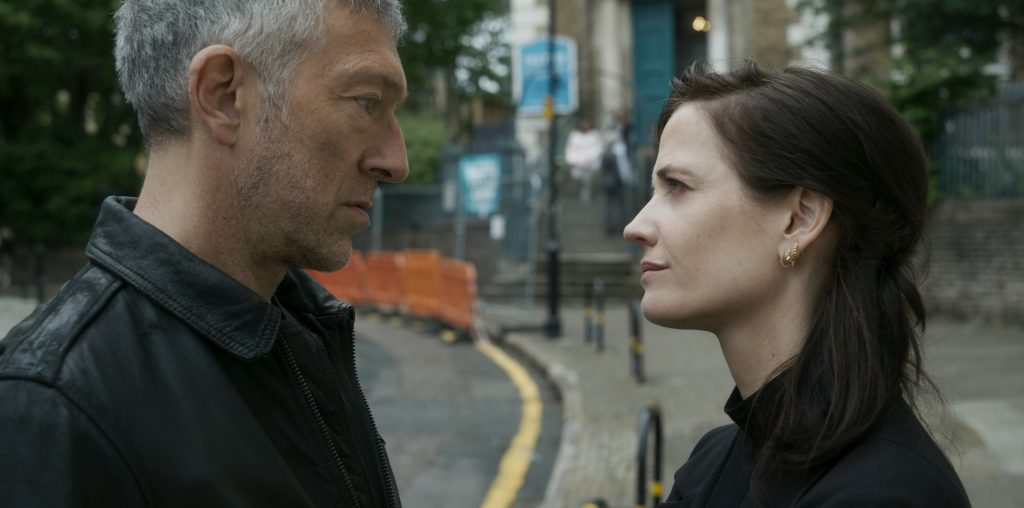
Who or what are your biggest inspirations or mentors?
Visiting Panavison NY and seeing an all-African-American camera team prepping 35mm kit for a TV feature film. I’d spent some time previously at Panavision Wembley doing work experience and learning about camera equipment and had never seen Black camera crew.
What are the key qualities of a star focus puller?
What’s a star focus puller? Key qualities of a focus puller that gets involved is to care about their performance, care about their crew and care about the production that they’re working on.
What are the fundamentals of a successful 1st AC/DP relationship?
Trust. Trust me to do my job and have your back and for me to be able to trust that you will listen to what I have to say and support me in discussions with the production office. Also got to be able to have fun.
How would you describe your technique?
Mama Bear – or so I’m told.
Which production was the most challenging and why?
Death at a Funeral. It was my first feature film up front as a focus puller on 35mm film and using Master Prime lenses. Frank Oz was the director and Oliver Curtis the DP was trusting me to be able to step up and deliver.
Which production are you most proud to have worked on and why?
Death at a Funeral. I was a Black Swan. Although to this day I still don’t have a poker face, I show worry, anger, concern and my Paddington hard stare.
What is your favourite memory of working on set?
From which decade? Meeting a paramedic who had his own business supplying medical care to the film and TV industry who had been a student of mine at the Saturday school.
The jokes and camaraderie between actors and crew.
What kit have you been impressed by?
Cine RT and my old leatherbound tape measure.
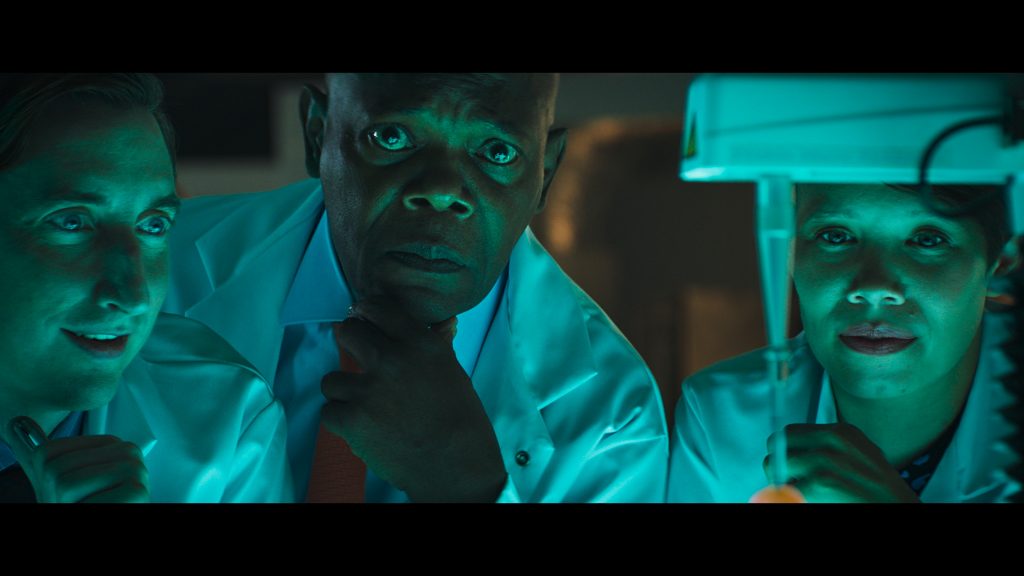
What obstacles do you face in your career and how do you overcome them?
Not enough hours in the day. Being a present parent and keeping up with the rigours of working, often having to write equipment lists, read scripts and look for crew outside of contracted hours.
How do you balance family and work life?
Still trying to work that one out. I’m very lucky that I’ve been supported by Annie (Tricklebank), the executive producer on Call The Midwife, who made it possible to return to work on a job share basis since 2016. Parents can miss out on so much because they are working. I’ve had to make a lot of tough decisions and when pregnant I lost a whole day’s pay every time I had to attend an antenatal appointment. Being a focus puller, you can’t pop out for a couple of hours and get someone within your team to cover you, you just about get time to go to the toilet. I also never attended NCT antenatal classes because of shoot hours.
What advice would you give aspiring 1st ACs?
Never be afraid to ask questions or for ¼ of a stop.
What inspires you outside of the world of film?
The tenacity of those who continue on despite the negativity of those around them. An image that I recently saw during UK Black History Month with the phrase ‘Well Behaved Women Seldom Make History’. My name, Hilda, which means battle maiden.
What are the biggest recent changes you have seen in the world of filmmaking?
I would rather see lasting change than biggest change.
Executive producer Annie Tricklebank says: “I have worked with Hilda as an operator and a focus puller and whichever job she is doing she clearly communicates the vision of the director and tells the story well. Hilda’s operating and focus pulling always connect directly with the story and hence her movement of the camera, its placement, and focus are always exceptional. Hilda always makes the right decision as to when and what the camera should be focussing on during a scene. This kind of skill can only be achieved through hard work and a mountain of experience. When I have been directing Hilda has inspired me. I have watched her many, many times and learned a huge amount. Hilda is not only an inspiration to her directors but also to her crew. There is no better teacher or crew leader.”
Cinematographer Oliver Curtis BSC says: “Hilda is everything a DP could want from a 1st AC – technically superb, intuitive and knowledgeable. A great team leader and nurturer of the next wave, she has blazed a trail in our industry and remains the first on my list when a new project comes up. Unsurprisingly, she is much in demand.”
Cinematographer Katie Swain says: ”I first met Hilda when I was a fledgling DP and she was a clapper loader back in 1999 and was immediately impressed by her work ethic and efficiency. It was at a time when women in the camera department were few and far between and I felt proud to have her on my team and as a woman really valued her support. Over the subsequent years we’ve continued to work together when availability allows and her years of experience and positivity are an asset to any production. Oh, and she’s fun!”
